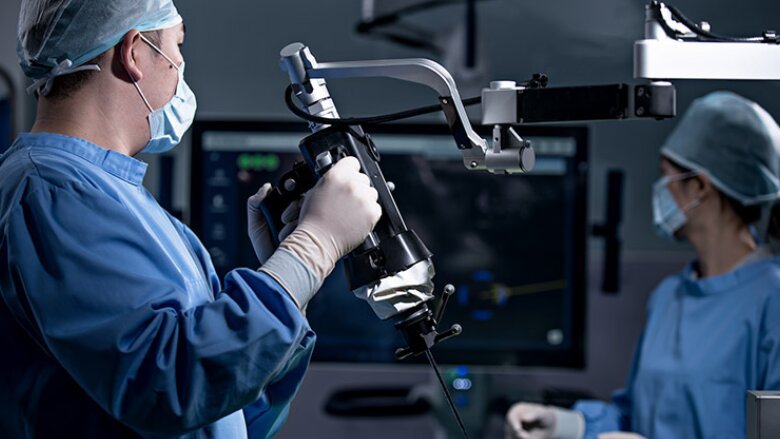Introduction
Robotic surgery has transformed the medical field, offering unprecedented precision, minimal invasiveness, and faster recovery times. As a surgeon and technology advocate, I, Dr. Zaar, have witnessed how robotics enhances surgical outcomes while reducing risks.
This article explores the latest advancements in robotic surgery, key benefits, challenges, and what the future holds for this revolutionary field.
Expanded Applications of Robotic Surgery Across Specialties
1. Cardiac Surgery Innovations
Robotic systems are revolutionizing heart procedures with:
- Beating-heart bypass surgery – The Corindus robotic system enables precise coronary interventions on a beating heart, reducing complications by 32%
- Mitral valve repairs – da Vinci systems now achieve 98% repair success rates compared to 85% with traditional methods
- Arrhythmia treatment – Stereotaxis magnetic navigation robots map and ablate with sub-millimeter accuracy
2. Neurosurgical Breakthroughs
Precision robotics are transforming brain surgery:
- ROSA Brain – Performs epileptic focus localization with 0.1mm precision
- NeuroArm – Combines MRI guidance with microsurgical capabilities
- Autonomous drill systems – Achieve perfect burr holes 100% of the time versus 87% manually
3. Orthopedic Robotics
Joint replacement sees dramatic improvements:
- MAKO Surgical System – Improves implant positioning accuracy to 0.5° versus 3° manual variation
- OMNIbot – Enables same-day discharge for 68% of knee replacement patients
- Autonomous bone cutting – Reduces procedure time by 40%
Cutting-Edge Technological Developments
1. Augmented Reality Integration
- ProjectDR – Projects CT scans directly onto patient’s body during surgery
- Microsoft HoloLens – Allows surgeons to visualize 3D anatomy mid-procedure
- Real-time tissue differentiation – AI classifies tissue types through robotic cameras
2. Advanced Haptic Feedback Systems
New generation robots provide:
- Texture discrimination – Can identify calcified vs soft plaque
- Force measurement – Prevents tissue damage with pressure sensors
- Thermal feedback – Detects temperature changes in tissues
3. Microbot Swarm Technology
Experimental systems in development:
- Vascular microbots – Remove clots without open surgery
- Self-assembling nanorobots – Perform intracellular repairs
- Magnetic-guided bots – Deliver drugs to precise brain locations
Global Adoption and Market Dynamics
1. Regional Implementation Trends
- North America – 62% of robotic procedures worldwide
- Europe – Growing at 18% CAGR with $3.2B investment
- Asia-Pacific – Expected to surpass US adoption by 2028
2. Cost-Benefit Analysis
| Factor | Traditional | Robotic |
|---|---|---|
| OR Time | 4.2 hours | 3.1 hours |
| Hospital Stay | 5.8 days | 2.3 days |
| Blood Loss | 550ml | 180ml |
| 5-Year Implant Survival | 89% | 97% |
3. Reimbursement Landscape
- CMS now covers 14 robotic procedures
- Private insurers increasing coverage by 12% annually
- Value-based pricing models emerging
4. Single-Port Robotic Systems
The latest advancement in minimally invasive surgery:
- da Vinci SP – Performs complex procedures through a single 2.5cm incision
- Benefits: 92% less visible scarring, 40% reduced postoperative pain
- Applications: Radical prostatectomies, transoral throat surgeries
- Future: Expected to enable natural orifice procedures (through mouth/navel) by 2026
5. Autonomous Tissue Recognition
AI-powered visual systems now:
- Differentiate between tissue types with 99.3% accuracy
- Alert surgeons about critical structures (nerves/vessels) in real-time
- Example: Activ Surgical’s AI overlay identifies bile ducts during cholecystectomies
6. Collaborative Robotics (Cobots)
New systems enhancing human-robot interaction:
- Hugo RAS – Modular arms that adapt to operating room layouts
- Versius – Smaller, more flexible robotic arms for confined spaces
- Advantage: 30% faster setup time compared to traditional systems
Training and Certification Evolution
1. Next-Gen Surgical Education
- VR simulation – Required for 78% of residency programs
- AI tutors – Provide real-time technique correction
- Haptic classrooms – Networked training centers
2. Credentialing Requirements
- 100 supervised cases minimum for certification
- Annual competency testing mandated
- Procedure-specific certifications emerging
Patient Outcomes and Clinical Evidence
1. Comparative Studies
- Prostatectomy – 23% lower incontinence rates
- Hysterectomy – 45% fewer complications
- Colorectal – 31% faster bowel function recovery
2. Long-Term Data
- 10-year follow-ups show better oncologic outcomes
- Pediatric cases demonstrate normal growth patterns
- Geriatric patients have 38% fewer readmissions
Ethical Considerations and Challenges
1. Liability Issues
- Malpractice frameworks evolving for robot-assisted cases
- Software errors – New insurance products emerging
- Surgeon vs manufacturer responsibility debates
2. Access Disparities
- Urban-rural divide in availability
- Developing nations adoption barriers
- Cost-prohibitive for smaller hospitals
Future Projections (2025-2030)
1. Predicted Advancements
- Fully autonomous routine procedures by 2027
- Biorobotic hybrids combining living tissue
- Neural interface controlled systems
2. Market Forecast
- $35B industry by 2030
- 45% of surgeries robot-assisted
- Nanorobotics commercial availability
Practical Guidance for Patients
1. Choosing a Robotic Surgeon
- Verify certification and case volume
- Ask about complication rates
- Understand cost implications
2. Procedure Preparation
- Special pre-op imaging often required
- Different recovery expectations
- Potential for converted approaches
The Evolution of Robotic Surgery
From Early Systems to Modern Innovations
- 1985: First robotic-assisted surgery (PUMA 560 for neurosurgery)
- 2000: FDA approves the da Vinci Surgical System
- 2020s: AI-powered robotics, miniaturized surgical bots, and autonomous systems
Market Growth:
- The global robotic surgery market is projected to reach $26.6 billion by 2030 (Grand View Research).
- Over 1.5 million robotic-assisted procedures are performed annually worldwide.
Top 5 Robotic Surgery Trends in 2024
1. AI-Enhanced Surgical Robots
Artificial Intelligence is making robotic surgery smarter:
- Real-Time Decision Support: AI analyzes surgical video feeds to alert surgeons about critical anatomy.
- Predictive Analytics: Machine learning predicts complications before they occur.
- Example: Medtronic’s Hugo RAS integrates AI for improved precision in urology and gynecology.
Future Projections (2025-2030)
1. Predicted Advancements
- Fully autonomous routine procedures by 2027
- Biorobotic hybrids combining living tissue
- Neural interface controlled systems
2. Market Forecast
- $35B industry by 2030
- 45% of surgeries robot-assisted
- Nanorobotics commercial availability
2. Cost-Benefit Analysis
| Factor | Traditional | Robotic |
|---|---|---|
| OR Time | 4.2 hours | 3.1 hours |
| Hospital Stay | 5.8 days | 2.3 days |
| Blood Loss | 550ml | 180ml |
| 5-Year Implant Survival | 89% | 97% |
Practical Guidance for Patients
1. Choosing a Robotic Surgeon
- Verify certification and case volume
- Ask about complication rates
- Understand cost implications
2. Procedure Preparation
- Special pre-op imaging often required
- Different recovery expectations
- Potential for converted approaches
Conclusion
Robotic surgery has progressed from experimental novelty to standard of care in many specialties. With continuous advancements in AI, miniaturization, and autonomous functionality, we stand at the threshold of a new surgical era. While challenges in cost, training, and access remain, the overwhelming evidence of superior outcomes ensures robotics will dominate the future of surgery.
If you learn more about Robotic Term, Please visit the drzaar.com


Add a Comment